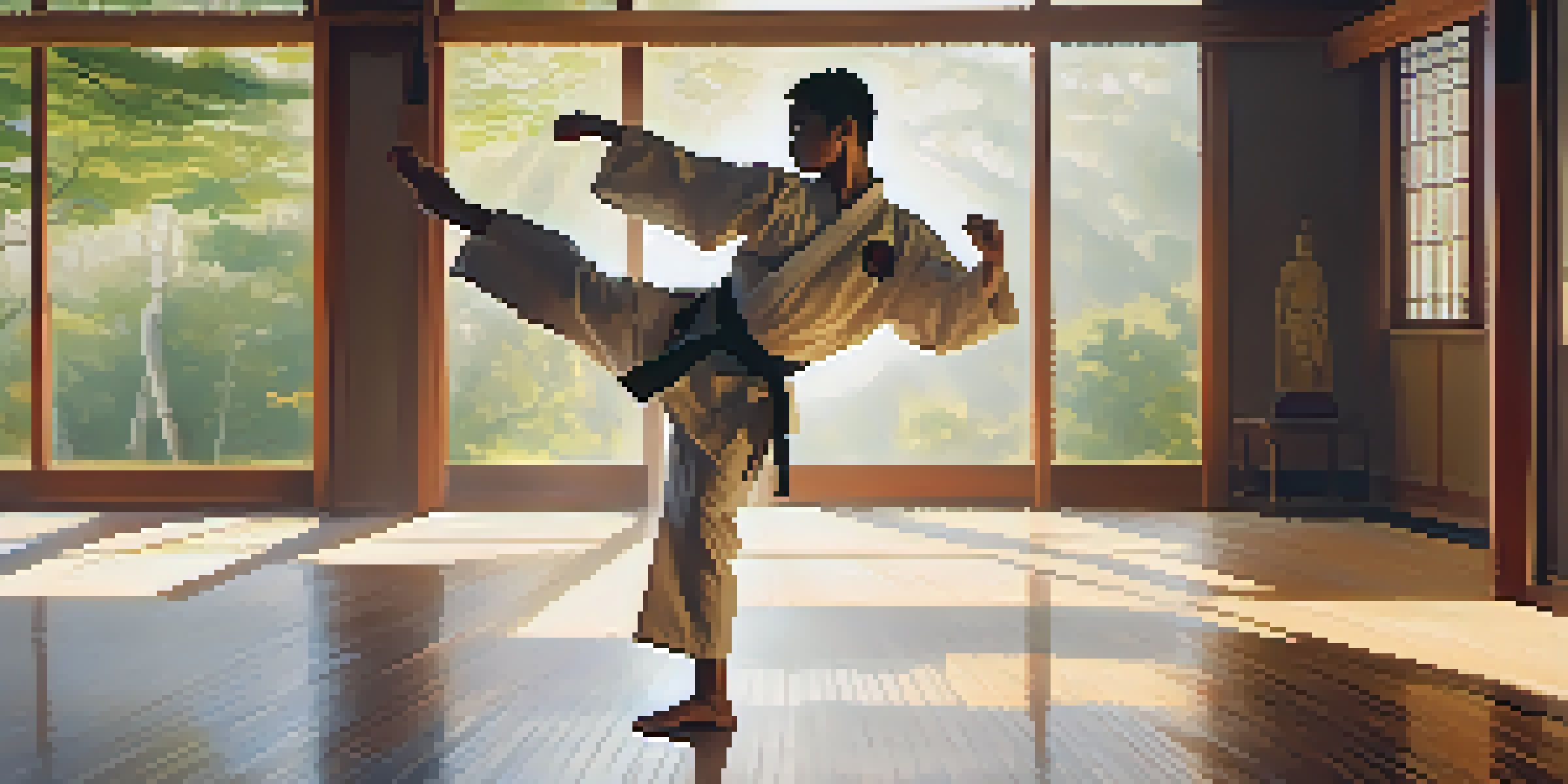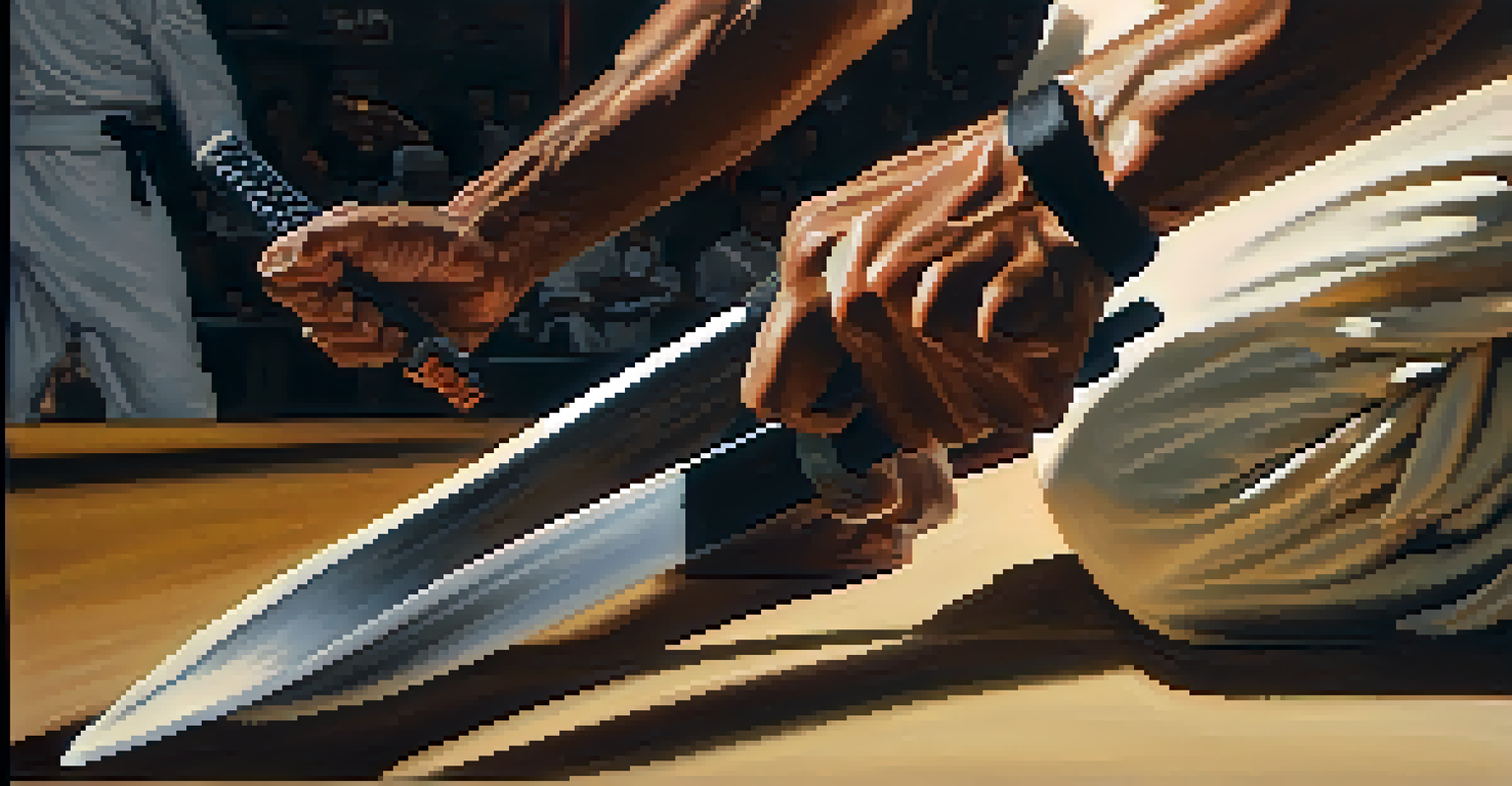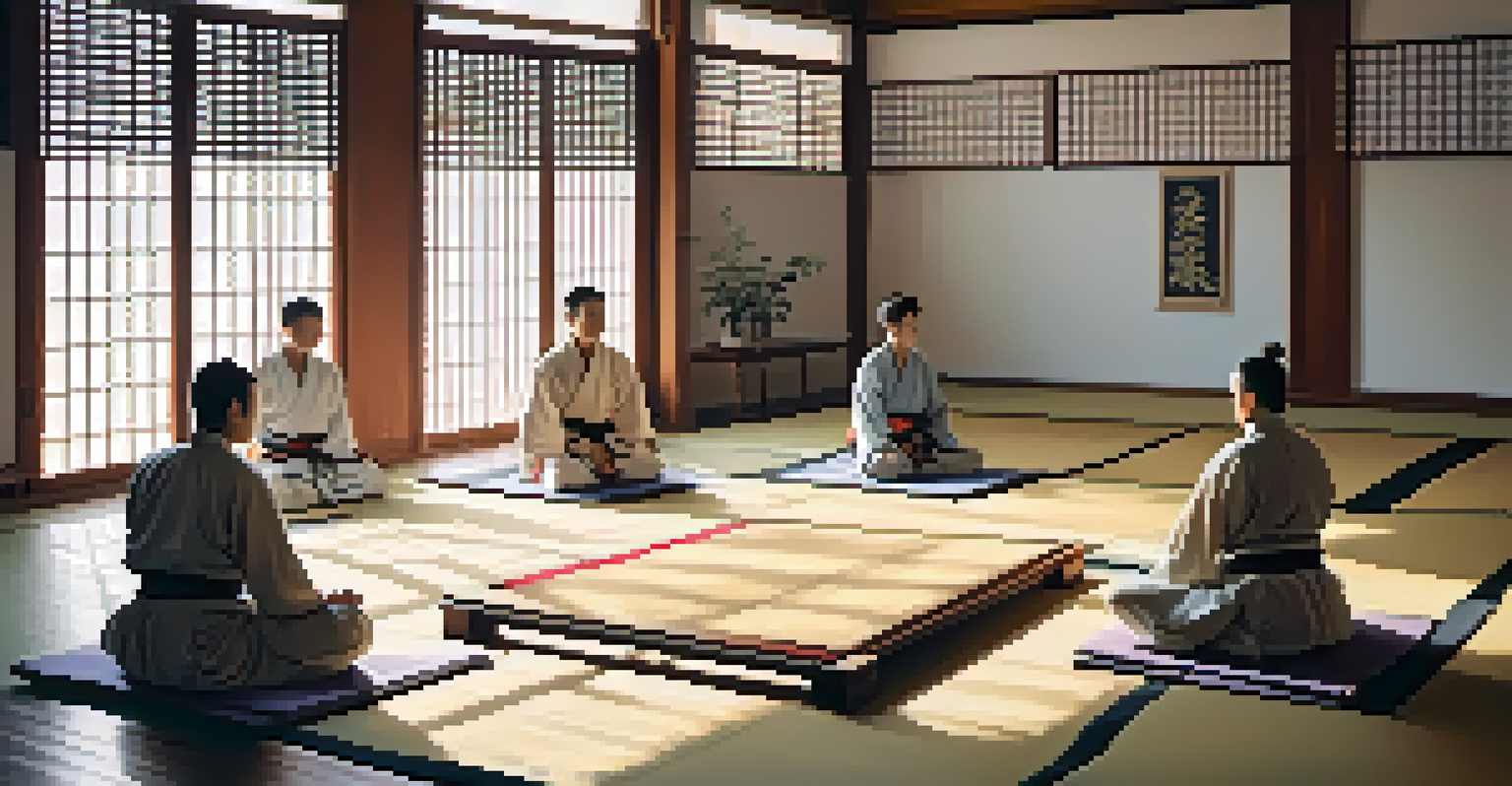Building Resilience: Mental Strategies to Avoid Martial Arts Injuries

Understanding the Importance of Mental Resilience
Mental resilience is the capacity to recover quickly from difficulties, and it plays a crucial role in martial arts. When fighters face challenges, whether physical or emotional, a strong mental framework can prevent injuries by promoting focus and determination. Just as a tree bends with the wind but doesn’t break, resilient martial artists adapt to adversity, which ultimately enhances their performance.
The greatest glory in living lies not in never falling, but in rising every time we fall.
In martial arts, injuries often stem from not just physical strain but also mental fatigue. A resilient mindset helps practitioners to stay engaged and aware, reducing the likelihood of careless mistakes that can lead to injury. Think of it like a chess game; if you lose focus, your next move might result in defeat.
Ultimately, building mental resilience equips martial artists with the tools to navigate the ups and downs of training and competition. This mindset can transform how they approach challenges, making them more adaptable and less prone to injuries over time.
Setting Realistic Goals for Training
One key strategy for building resilience is setting realistic training goals. Instead of aiming for perfection, focus on achievable milestones that encourage progress without overexertion. This approach not only keeps motivation high but also allows the body to adapt gradually, minimizing injury risk.

For example, if you're training for a tournament, consider breaking down your preparation into smaller, manageable tasks. By celebrating small victories along the way, you reinforce a positive mindset and build resilience. It’s like climbing a mountain; each step towards the summit makes the journey rewarding and less daunting.
Mental Resilience Enhances Performance
A strong mental framework helps martial artists recover quickly from challenges, reducing the risk of injuries.
Moreover, realistic goals foster a healthier relationship with training, shifting the focus from merely winning to personal growth. This mindset not only enhances resilience but also contributes to long-term success and well-being in martial arts.
Embracing a Growth Mindset
A growth mindset is the belief that abilities can be developed through dedication and hard work. Embracing this perspective can significantly enhance resilience in martial arts. Instead of fearing failure, practitioners learn to view setbacks as opportunities to grow and improve.
Success is not final, failure is not fatal: It is the courage to continue that counts.
When a martial artist encounters a tough training session or faces an injury, a growth mindset encourages them to reflect on what can be learned from the experience. This reflective practice not only aids recovery but also fortifies their mental toughness, much like a blacksmith forges steel through heat and pressure.
Additionally, adopting a growth mindset allows practitioners to stay motivated during challenging times. By recognizing that improvement is a journey, they can cultivate resilience and reduce the likelihood of injuries while pursuing their martial arts goals.
Visualization Techniques for Injury Prevention
Visualization is a powerful tool that can enhance mental resilience and help prevent injuries in martial arts. By imagining successful techniques and scenarios, practitioners can mentally prepare themselves for physical challenges. This practice helps establish a connection between the mind and body, making movements more instinctive and fluid.
For instance, before a training session, a martial artist might visualize executing a difficult kick flawlessly. This mental rehearsal not only boosts confidence but also encourages proper form, reducing the risk of strain or injury. It’s akin to a musician practicing in their mind before stepping onto the stage.
Setting Realistic Goals Matters
Achievable milestones in training keep motivation high and foster resilience while minimizing injury risks.
Moreover, incorporating visualization into training routines can strengthen focus and concentration. As practitioners become more attuned to their movements, they’re less likely to make careless mistakes that could lead to injuries, fostering a safer training environment.
Practicing Mindfulness During Training
Mindfulness involves being present in the moment, and it can significantly enhance resilience in martial arts. By practicing mindfulness techniques, such as focused breathing or meditation, practitioners can cultivate awareness of their bodies and movements. This heightened awareness helps them identify signs of fatigue or discomfort before they escalate into injuries.
For example, taking a few moments to breathe deeply before sparring can ground a martial artist, allowing them to enter the ring with clarity and focus. This practice not only enhances performance but also creates a safer training environment by promoting self-awareness.
Additionally, regular mindfulness practice can reduce stress and anxiety, which are common contributors to injuries. By fostering a calm and focused mindset, martial artists can navigate their training with greater resilience and fewer risks.
Listening to Your Body and Resting
One of the most critical aspects of building resilience is learning to listen to your body. Recognizing when to push through discomfort and when to rest is essential for injury prevention. Ignoring pain signals can lead to serious injuries, so understanding the difference between soreness and pain is crucial.
For instance, if a martial artist feels tightness in their muscles during training, taking a break to stretch or rest can prevent a more serious injury down the line. It’s like a car warning you when it’s low on fuel; if you ignore it, you might find yourself stuck on the side of the road.
Supportive Environment Boosts Growth
A positive training atmosphere encourages open communication and camaraderie, which enhances resilience among practitioners.
Moreover, incorporating rest days into training schedules allows the body to recover and build strength. This practice not only enhances resilience but also ensures that martial artists can continue training without fear of injury, fostering a long-lasting, sustainable practice.
Building a Supportive Training Environment
A supportive training environment can significantly contribute to building mental resilience among martial artists. When practitioners feel safe and encouraged by their peers and instructors, they’re more likely to take calculated risks and push their limits without fear of injury. This camaraderie fosters a culture of growth and resilience, where everyone looks out for one another.
For example, having a training partner who provides constructive feedback and encouragement can boost confidence and reduce anxiety during drills or sparring sessions. It’s like having a safety net; knowing someone is there to support you makes it easier to take on challenges.

Additionally, a positive training environment encourages open communication about injuries and recovery. By fostering a culture of understanding and support, martial artists can prioritize their well-being while still pursuing their goals, ultimately building greater resilience together.